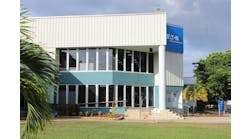Made in China: Boxes everywhere display this moniker in bold black letters. It is my belief that the move to offshore manufacturing was primarily due to labor costs and the effects of labor unrest. Unions are the culprit here, in my estimation. But, wait, aren’t companies and the executive branch responsible, as well, you may ask?
Well, yes, Virginia, they are. The thirst for profitability outweighs just about everything they hold dear. The need to squeeze every penny of profit is a lofty goal, and at what societal cost?
Companies will always survive because we need the products they produce, so it really comes down to who will produce them. Manufacturing in the 1950s was over 32% of employment in the United States, and now it is below 9%.
Population has grown from fewer than 200 million in the 1950s to more than 340 million, and yet manufacturing has lagged behind in the pursuit of profits. Unions have done it to themselves. The latest salvo demanded by the UAW was a 40% wage increase because the company made more money. They have done marginally better these past two years than in the previous 10. From 2016 to 2020, profitability was on the decline. Inflation has been a thorn in everyone’s side after the pandemic, but it will return to normal, so trying to orchestrate a huge payday on a transitory metric is irresponsible to the membership, in my view.
Exercising the right to strike is the worst decision that has been made. “If you don’t give me what I want, I will shut you down and keep you down until you pony up.” This adversarial stance has landed us where we are now. Automation and programmable logic controllers (PLCs) in the 1970s were sold as benefits to all. “No, they won’t replace people.” Someone lied.
Automation, PLCs and robots are used to design workers out, which in turn will design unions to the grave if they don’t look inward.
Automation will not stop, and automated processes are the new manufacturing. This is where we sit back and take stock and need to start thinking differently. Companies need profits for shareholders. That’s the business model. If we can’t afford the products, then we are all in trouble. But, if we can make them inexpensively, then we can still make money.
Unions need to be the driver of the solution that can change the course of history. Companies want stability, as do most of us. Holding companies and society hostage by taking anything away from the status quo has no longevity. Honda and Toyota seem to manage quite well without this threat. Their future depends on it.
The second part of this discussion is artificial intelligence (AI). The writer’s union went on strike to protect themselves against progress. “We need to be protected against AI,” they said. “It will take our jobs.” Studios are no different than companies. It’s all about the money. I have no knowledge of the environment that writers and actors have with respect to their wages and working conditions, but I can only imagine that they do OK. In the worst case, I have a job for you, and it pays this much. Negotiate a better rate, but you will not be able to become a millionaire by writing jingles for commercials, although it has been done.
AI in our world will create so many opportunities for everyone including people who want to do us harm, so we have to be very careful. In our business—automation—AI can help in predictive maintenance, troubleshooting and design review; and the list just keeps getting bigger. Will AI disrupt our world? Absolutely. Does it have to disrupt our lives? No. It can complement it. A big “but” is this: “If I can use AI to make us more money why wouldn’t I?” asks the company CEO. Some have called our societal business model a race to the bottom, and it is hard to argue against it.
AI can’t buy anything, and robots never take time off or go on strike. We can make stuff for people to buy, but the declining bank accounts of most will run dry, and the number of people available to do the work will increase. But everyone wants a job that pays $100,000 per year. The government wants to protect the middle class, but it is the fastest declining societal sector. Low income and gobs of money sectors will be it.
I always think of the movie “RoboCop,” where the masses fight among themselves and security is done with AI-driven robots. We are heading there.
Profit sharing forces everyone to work together, not against each other. It is high time we re-evaluated our future. Companies will always survive. Unions? How do we really protect ourselves? It’s food for thought.





